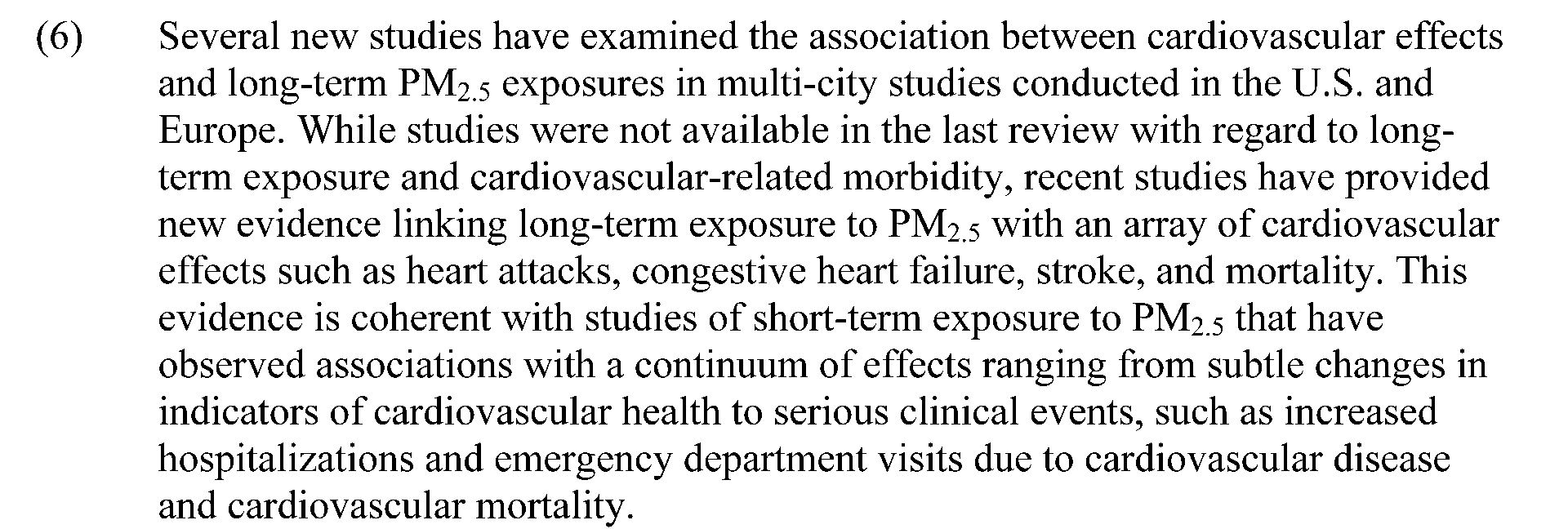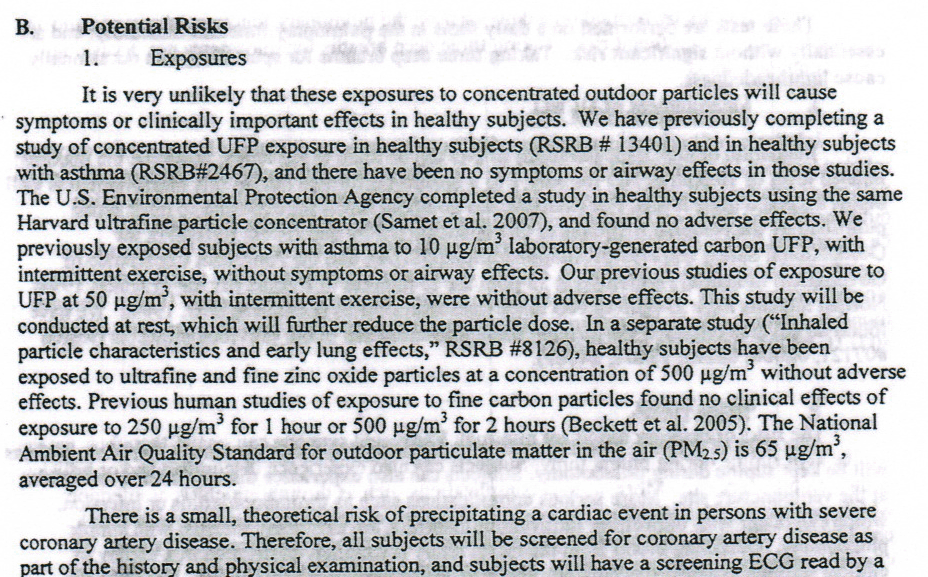JunkScience.com recently obtained through the Freedom of Information Act documents describing human clinical experiments involving high exposures to particulate matter conducted by the University of Rochester with EPA funding.
As background, here is how the EPA described the risk of inhaling airborne fine particulate matter (PM2.5), i.e., soot or dust much smaller in diameter than the width of a human hair in its December 2012 Federal Register notice tightening the PM2.5 ambient air quality standards:
Note that EPA says that short-term exposure to PM2.5 in outdoor air can cause a fatal heart attack.
At the University of Rochester, human study subjects up to age 60 were exposed to much-more-than-normal outdoor air levels of PM2.5:
But despite exposing human study subjects to 20 TIMES the level of PM2.5 in outdoor air, the University of Rochester researchers told the institutional review board responsible for approving the experiment:
Note that the EPA’s alleged emergency room visits and deaths related to heart attack are, in reality, “small” and “theoretical” even in those with “severe coronary artery disease”!
EPA’s PM2.5 rules cost the American economy hundreds of billions of dollars. Oddly enough, they will serve as the primary justification for the agency’s upcoming ozone standards, anticipated to be the most expensive EPA regulations of all time — all built on demonstrable lies.



over blown hype and scaremongering the epa has to keep itself in business and profitable (it is a dept of the corp known as usa). our air is alot cleaner then it used to be (during the beginning of last century) water too, the problem is while they are regulating our air and water unecessarily they are raising costs of doing business and prices for things like heat while the real problems are ignored. I do not believe the dept of the gov like fda dept of education, health and human services etc are there to help us andmake life just, healthy or enhance our happiness. they are designed to plunder, drain, and exploit the people under the umbrella of a good cause. to hide the real purpose as it were.
What I found interesting is that in the top paragraph where the EPA tells us that studies show PM2.5 in small doses will kill us does not contain any references to those studies while the justification in the “risk” section cites specific studies as support.
Which tale do you think more accurate? Things that make you go HHMMMMMMM….
That one oxygen atom sure is a big deal here and there. H2 vs H2O, H2O vs H2O2, CO vs CO2, O2 vs O3…
Agreed. It’s total nonsense. Just explaining the EPA’s “rationale.”
Only indirectly at best…which leaves me with my first suspicions intact.
Yes… I just haven’t gotten around to pulling them… so much fraud to expose… only so much Steve Milloy.
These results obtained by FOI appear to be important. It would seem that they should have been reported in scientific papers. Are there papers from U Rochester researchers?
90% of the EPA-claimed benefits of tightening the ozone standard are mortality-related — the mortality is actually attributed by EPA to PM2.5. Tightening the ozone standard will result in less PM2.5 emissions, thus less mortality.
Pardon me.
Ozone is O3, a variant of the standard O2 oxygen molecule. It’s a naturally occuring gas and also a by-product of some human activities.
It is not soot. It is not particulate matter. The processes that produce soot may have ozone as a minor by-product but ozone also comes from processes that don’t product fine particulate matter.
So how does ozone control link to control fine particulate matter? It may be well to reduce both, but they’re different items and would be dealt with in different ways, other than just shutting down industry. Which of course may be the real goal.